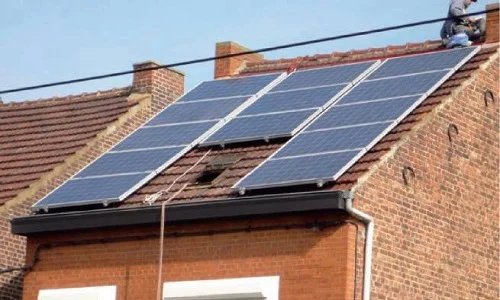In recent years, the demand for renewable energy sources has increased, with solar energy being one of the most popular options. Solar panels are widely used to harness the sun's energy and convert it into electricity. However, as technology has improved, new and more efficient solar modules have emerged. One such innovation is PERC flexible solar modules. In this article, we will compare PERC flexible solar modules with traditional solar panels, highlighting their differences and advantages.

Efficiency:
One of the main advantages of PERC flexible solar modules is higher efficiency compared to conventional solar panels. PERC technology enables better light absorption and improved energy conversion, resulting in higher power output. This means PERC modules can generate more electricity from the same amount of sunlight, making them more efficient and cost-effective in the long run.
Flexibility and Design:
Unlike rigid and bulky conventional solar panels, PERC flexible solar modules offer a greater degree of flexibility. They can be easily integrated into various surfaces such as curved roofs or even clothing, making them suitable for a wide range of applications. The flexibility of PERC modules also enables more creative and aesthetic designs that blend seamlessly with the fabric of a building or other structure.
Durability and Reliability:
PERC flexible solar modules are designed to be highly durable and resistant to environmental elements such as humidity, temperature fluctuations, and UV radiation. This makes them more reliable and durable than traditional solar panels, which can degrade over time due to exposure to harsh weather conditions. The durability of PERC components ensures a longer service life and a higher return on investment for users.
Cost-effectiveness:
While the initial cost of PERC flexible solar modules may be higher compared to conventional solar panels, their higher efficiency and durability make them more cost-effective in the long run. The increased power output and extended lifetime of the PERC modules result in higher energy savings and lower maintenance costs. In addition, the flexibility of PERC modules makes installation easier, reducing labor and material costs.
Impact on the environment:
Both PERC flexible solar modules and traditional solar panels help reduce carbon emissions and dependence on fossil fuels. However, PERC modules have advantages in terms of environmental impact due to their higher efficiency. By generating more electricity from the same amount of sunlight, PERC modules can offset a greater portion of carbon emissions, making them a greener option for renewable energy generation.
In conclusion, PERC flexible solar modules have several advantages over traditional solar panels. Their higher efficiency, flexibility, durability, cost-effectiveness, and environmental impact make them the best choice for harnessing solar energy. As the technology continues to advance, PERC modules are expected to become more efficient and affordable, furthering the adoption of solar energy as a sustainable energy source.
What are the advantages of PERC Flexible Solar Module?
What are the characteristics of PERC Flexible Solar Module?
How much do you know about flexible solar modules
Working principle and application of PERC flexible solar modules
Installation and maintenance of PERC flexible solar modules
What are the factors that affect the life of PERC flexible solar modules
https://www.fgnexsolar.com/Comparison-of-PERC-flexible-solar-modules-and-traditional-solar-panels.html